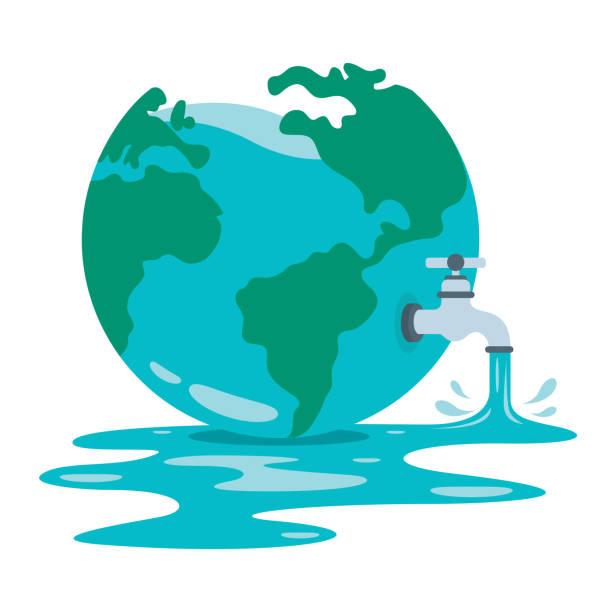Water is essential to life. It nourishes our bodies, sustains ecosystems, grows our food, and drives economies. Covering over 70% of the Earth's surface, water may seem abundant — yet less than 1% is fresh, accessible, and safe for human use. As climate change, pollution, and overuse threaten this precious resource, it becomes increasingly important to understand the value of water, the challenges we face, and the actions we must take to protect it.
💧 Why Water Matters
Water is not just a natural resource — it is a basic human right. Every aspect of life depends on clean and sufficient water:
-
Drinking water keeps us healthy and hydrated.
-
Agriculture relies on water to grow crops and raise livestock.
-
Industries need water to produce goods and cool machinery.
-
Ecosystems like rivers, wetlands, and forests depend on water for survival.
-
Sanitation and hygiene prevent disease and promote public health.
🚱 The Global Water Crisis
Despite its importance, billions of people around the world face water-related problems:
-
2.2 billion people lack access to safe drinking water.
-
Over 4.2 billion lack safely managed sanitation services.
-
Water scarcity affects more than 40% of the global population.
-
Pollution from industries, agriculture, and households contaminates rivers and lakes.
-
Climate change is causing droughts, floods, and changing rainfall patterns.
The crisis is not just about quantity, but also quality, accessibility, and equity.
🌊 Major Threats to Water Resources
-
Over-extraction – Drawing more water than nature can replenish.
-
Pollution – Dumping chemicals, plastic, sewage, and waste into water bodies.
-
Deforestation – Reduces rainfall and disturbs the water cycle.
-
Climate change – Alters precipitation, melts glaciers, and raises sea levels.
-
Urbanization – Increases demand while reducing natural recharge zones.
-
Inefficient use – Wasting water in agriculture, homes, and industries.
🌿 The Water Cycle: Nature’s Way of Recycling
The water cycle is a natural process that ensures water is constantly moving and renewing itself:
-
Evaporation from oceans and lakes
-
Condensation forming clouds
-
Precipitation as rain or snow
-
Infiltration into the ground
-
Runoff flowing back to rivers and seas
However, human interference has begun to disrupt this balance, causing unpredictable water availability.
💦 Water Conservation: Everyone’s Responsibility
Conserving water means using it wisely and protecting it from pollution. Here are some simple but powerful steps:
🏠 At Home
-
Turn off taps while brushing.
-
Fix leaks and drips.
-
Use a bucket instead of a hose for washing.
-
Install water-saving fixtures.
-
Harvest rainwater for gardens.
🏫 At School
-
Conduct water audits.
-
Launch water awareness campaigns.
-
Start a water-conservation club.
-
Organize debates, plays, and posters on water protection.
👨🌾 In Agriculture
-
Adopt drip irrigation and mulching.
-
Grow water-efficient crops.
-
Use treated wastewater for irrigation.
🏭 In Industry
-
Recycle water within factories.
-
Avoid releasing untreated waste into rivers.
-
Use water-efficient machinery.
🚰 Sustainable Development Goal 6: Clean Water and Sanitation
The United Nations SDG 6 calls for “availability and sustainable management of water and sanitation for all” by 2030. This means:
-
Universal access to safe water
-
Proper wastewater treatment
-
Water-use efficiency
-
Protection of freshwater ecosystems
Without water security, achieving other goals like health, education, and equality becomes impossible.
🌍 India and the Water Challenge
India faces a severe water crisis due to population growth, pollution, and uneven rainfall. Steps being taken include:
-
Jal Shakti Abhiyan – A campaign for rainwater harvesting and groundwater recharge.
-
Namami Gange – A national mission to clean the Ganga River.
-
Atal Bhujal Yojana – Promotes sustainable groundwater use in rural areas.
-
Swachh Bharat Mission – Improves water-linked sanitation systems.
Citizens, schools, and communities are also playing their part by reviving ponds, reducing wastage, and spreading awareness.
🧠 Fun Activities to Learn About Water
-
Create a "Drop of Life" art or poem.
-
Build a rainwater harvesting model.
-
Conduct an experiment on water pollution and filtration.
-
Start a "Save Every Drop" campaign in your building or school.
-
Use storytelling to imagine a world with no water.
🌧️ Conclusion: Every Drop Counts
Water is not unlimited. Every drop wasted is a drop stolen from the future. Protecting water is not just about science or policy — it is about ethics, respect, and survival.
💧🌍 Let’s value water — not just on World Water Day, but every day. Let’s turn the tide with knowledge, action, and compassion. Because where there is water, there is life — and a future worth saving.

